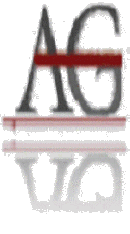A. Read the following selection from the Margin Notes by clicking on
the link.
B.
Watch these presentations. When you click on one of the links below, a new screen will pop up. Use the scrollbar on the side of the
new screen to navigate.
You need Adobe Reader to view PDF files.
|
There are no presentations to watch for this unit.
|
C. (Optional) Read the following chapters from the
textbook.
There are no chapters to read for this unit.
D1
Print the Required Links
document below and include it in your field manual. (See Field Manual Protocols, available as a download on the Unit 8 page.)
D2. The following Optional Links will help you do better in your course but they are not required.
E. Activity #1:
Creating Your Own Planet (10 points)
How would you like to make a planet? Here's your chance...
When you look at pictures of the planets, notice how unlike all the others the Earth appears. Saturn's and Jupiter's opaque gassy atmospheres are organized into parallel bands of ferocious wind. Mercury bakes in an eternal vacuum. Mars' thin, bone-dry atmosphere swirls with storms of dust. Even the Earth's near-twin, Venus, hides beneath an impenetrable shell of acid clouds. Only the Earth has weather compatible with life as we know it.
But what if the Earth's warm spots were a little colder or its cold spots a little warmer? What if it were to spin at a different speed or its axis of rotation was pointed in a different direction? What if the planet itself was bigger or smaller? How would our weather change? Would life still be possible?
No one yet knows the answers to these questions, but we can make some educated guesses. With the wise (and sometimes contradictory!) advice of experts,
Nova has created a virtual planetary lab, where you can change a little of this, a little of that and see how your plan for global weather turns out. See if you can figure out the magic combination that might create conditions similar to our own planet's, and therefore possibly suitable for life.
The extremely simplified scheme used in this activity ignores many inevitable issues, such as changing the chemistry of the atmosphere, increased or decreased total heat absorption due to unforeseen effects on cloud formation, and a host of other things we can't even imagine. That's okay, the whole idea is to encourage you to think, rather than supply the "right" answers. At this point in the young science of planetary weather, there are no right answers, only educated guesses -- a hint to any future scientists looking for a field to conquer.
Step 1
To start your activity, go to
Make the Earth's Weather (Shockwave plug in required). Begin by reading
Global Weather Machine.
It will be very useful as you play the game. [If you prefer, you can download a stand-alone (no browser or internet connection required) version at
Windows 95/NT version
(0.9MB) or
Macintosh version (1.7MB)]
Step 2
Pick the
ingredients for your planet. You can change size, spin, the presence of
oceans and the relationship of the equator to the sun. As you make changes, use the
See Effect button to gauge your progress. Keep trying different
changes until you're satisfied.
Step 3
When everything is as you want it,
write a summary of what you did that includes the 2 points below. Your summary should be thorough, specific, include relevant
concepts from the course material and be free of spelling and grammar errors.
[NOTE: As I've done below, I almost always list the things you need
to include in your assignment so you won't miss anything. However, you
should never write an assignment as a list unless the instructions
specifically tell you to do so. Lists encourage short, quick responses,
and they don't usually require much thought or much attention to spelling
and grammar. They also won't earn you many points! Instead, write your
assignment in complete sentences and paragraphs, using the list only to be
certain you cover everything. Do your best to make your writing thorough,
thoughtful and organized. Don't try to be concise ,,, Try to be complete.]
-
a
detailed description of what changes you made, why you made those changes and the final results
-
specific and detailed connections to course content.
Always include course concepts in your work. If you're reading your margin notes and watching the presentations, you'll have plenty of material from which to choose on every activity.

